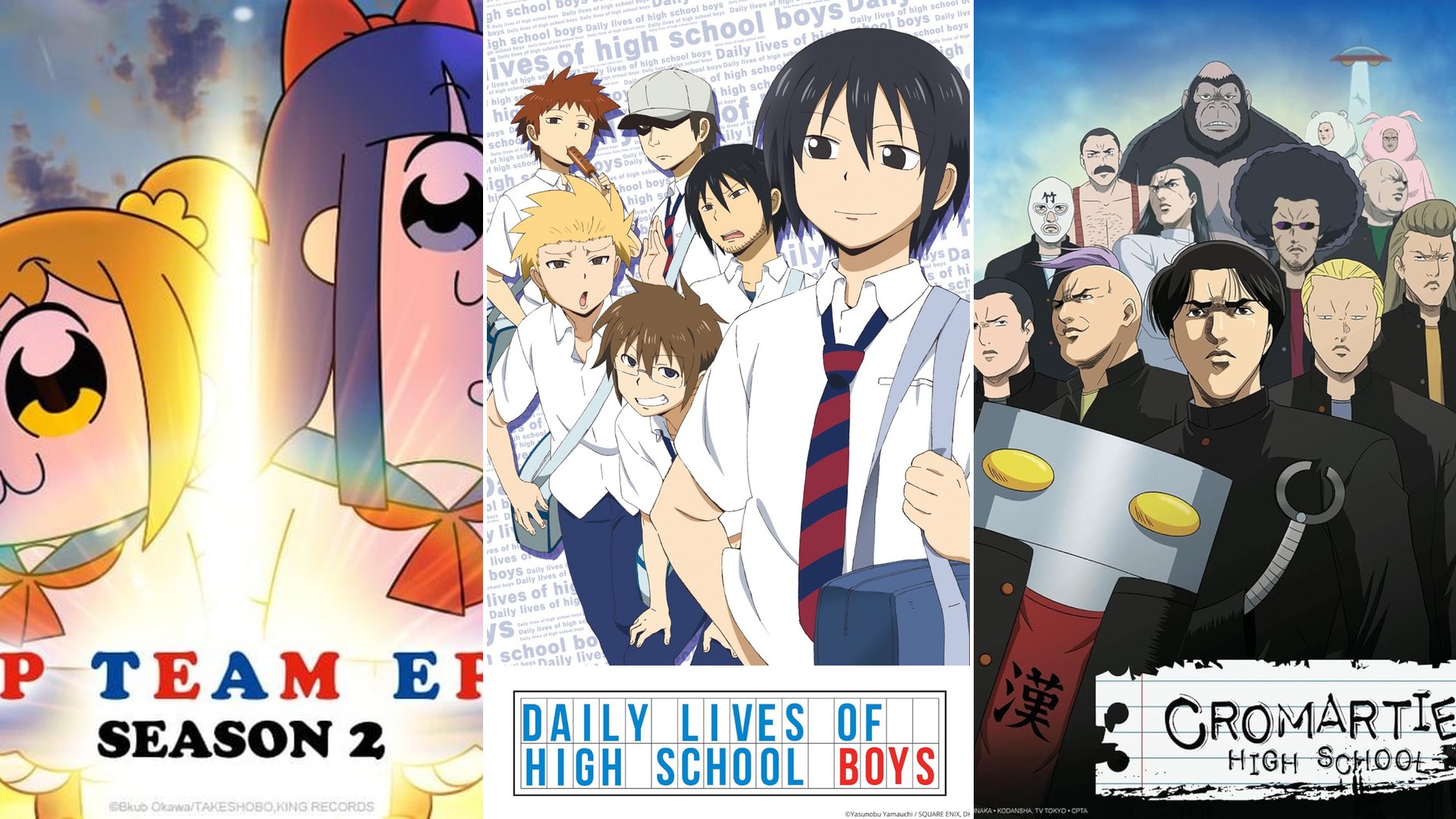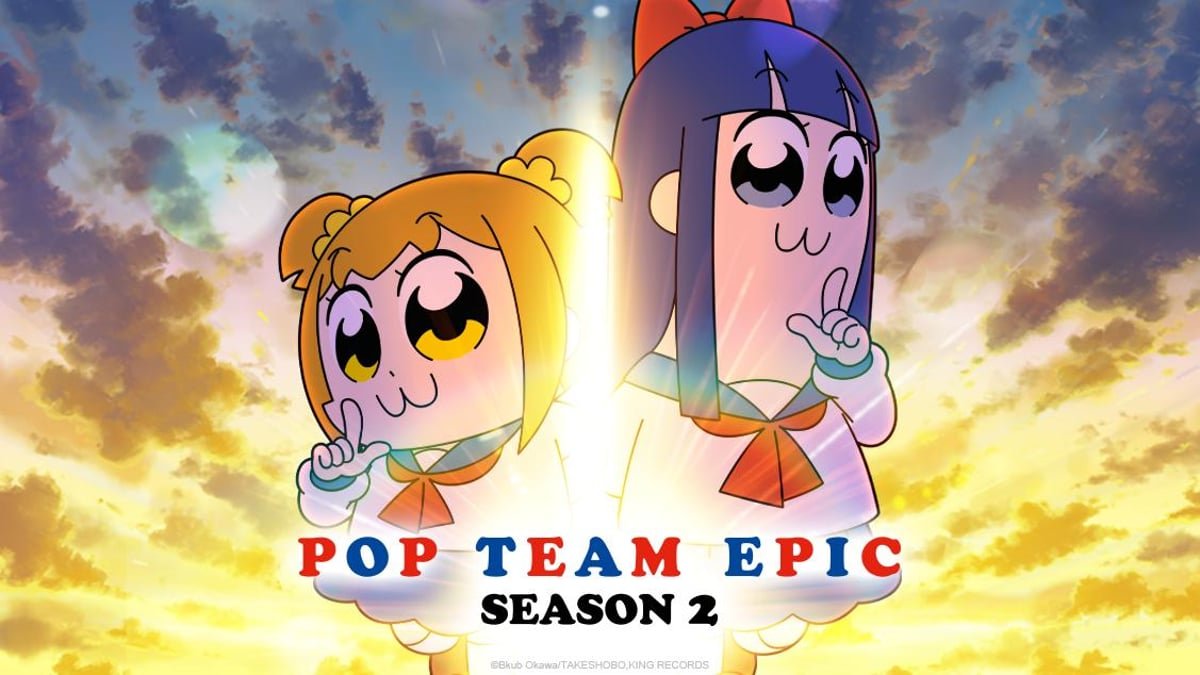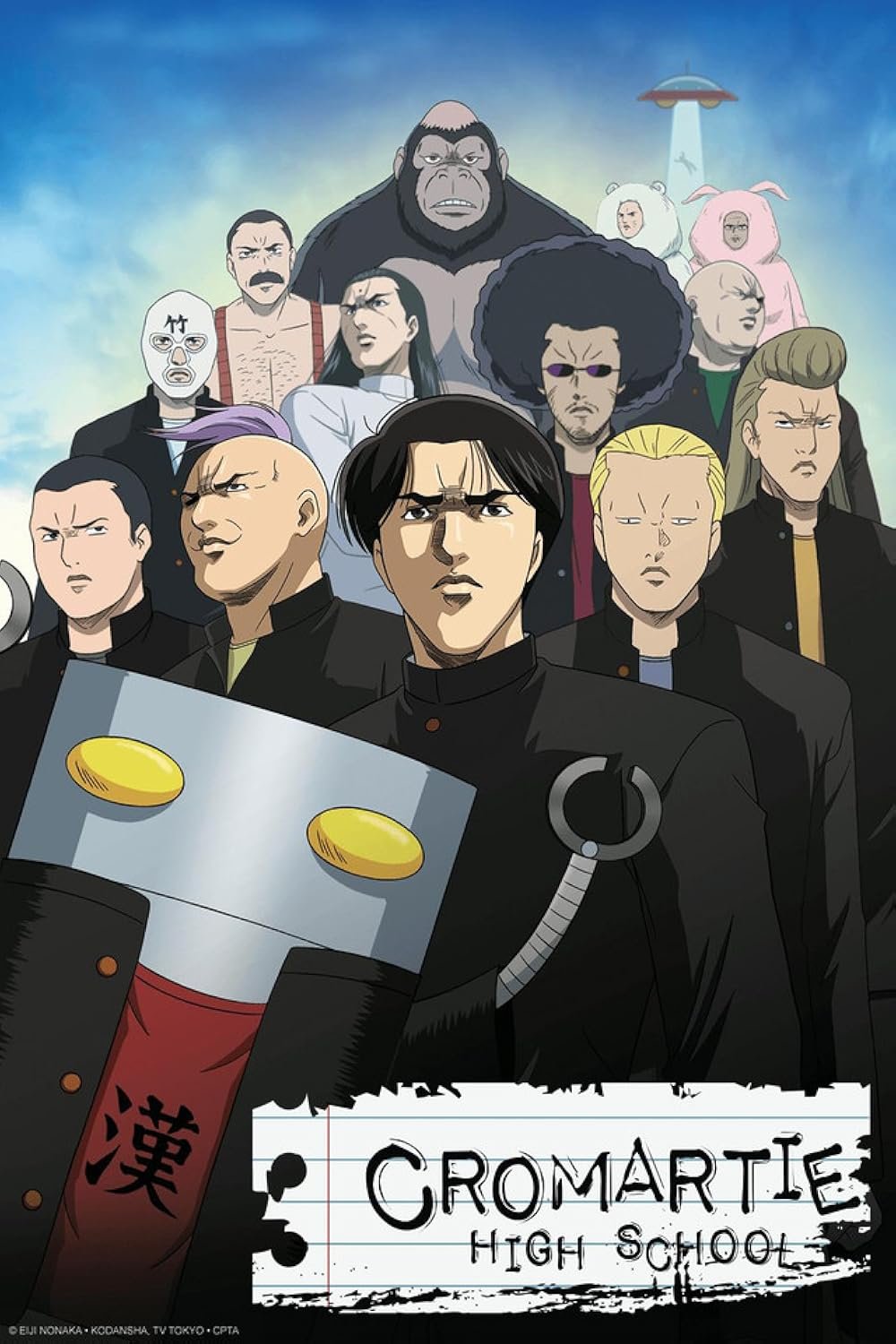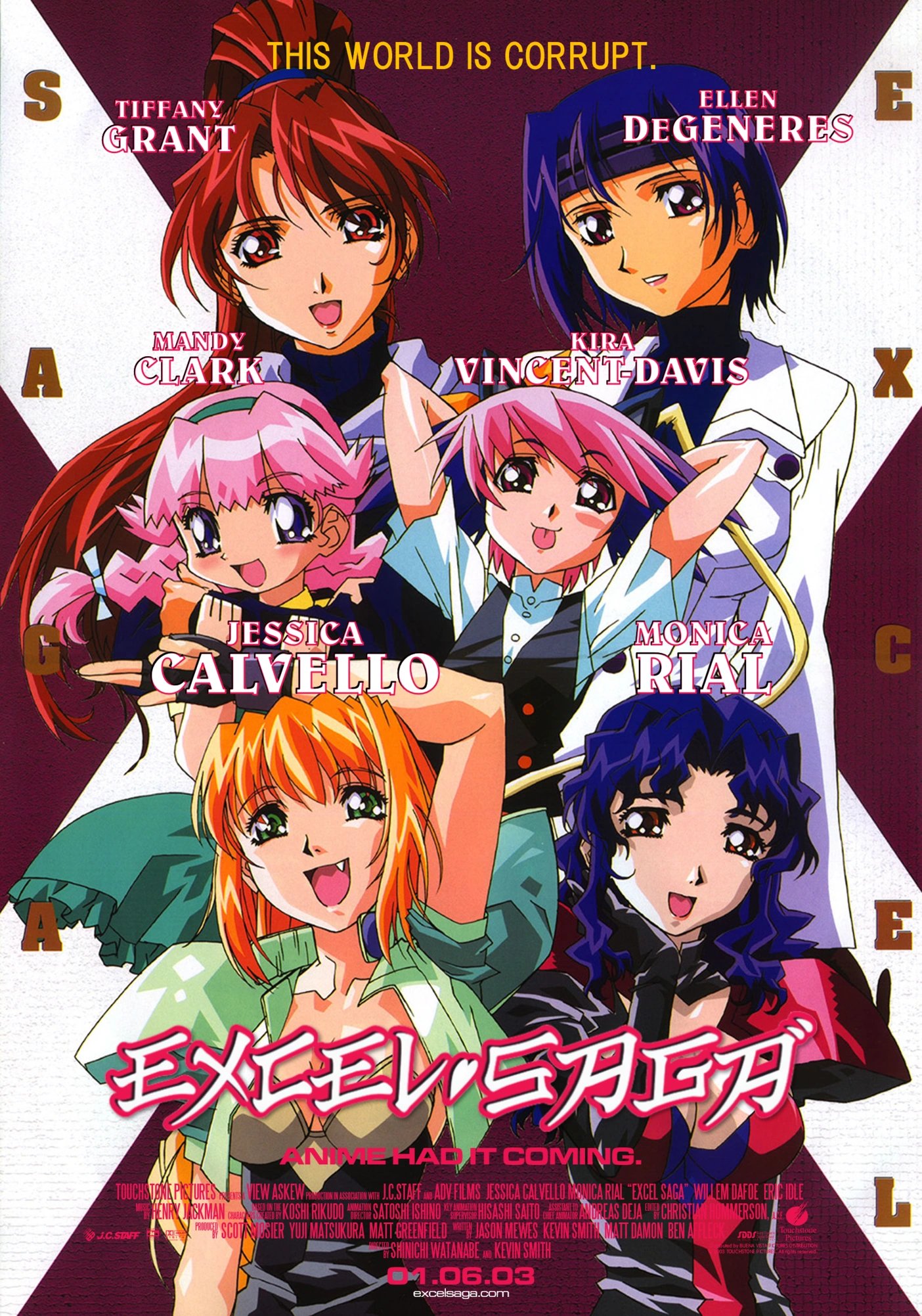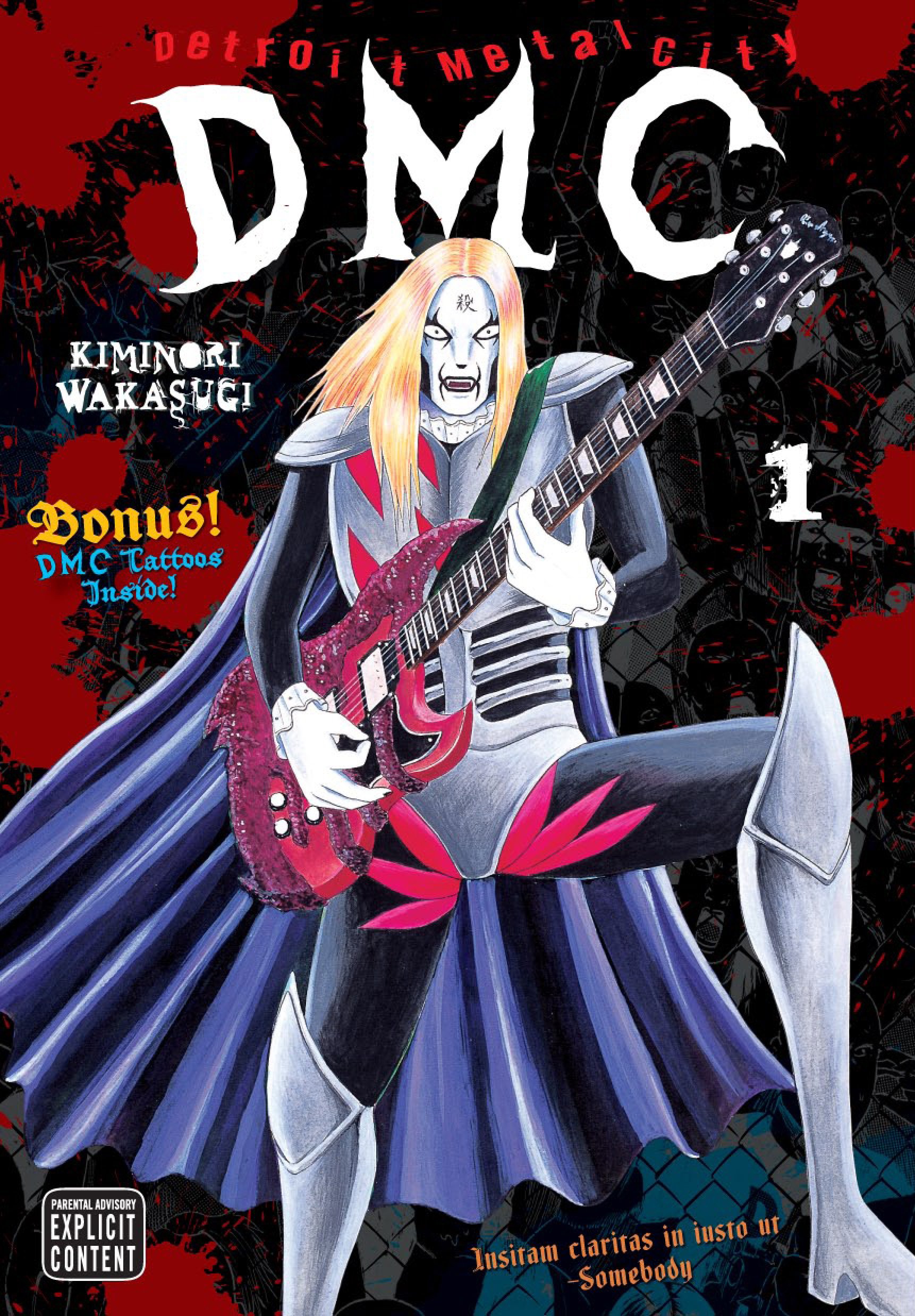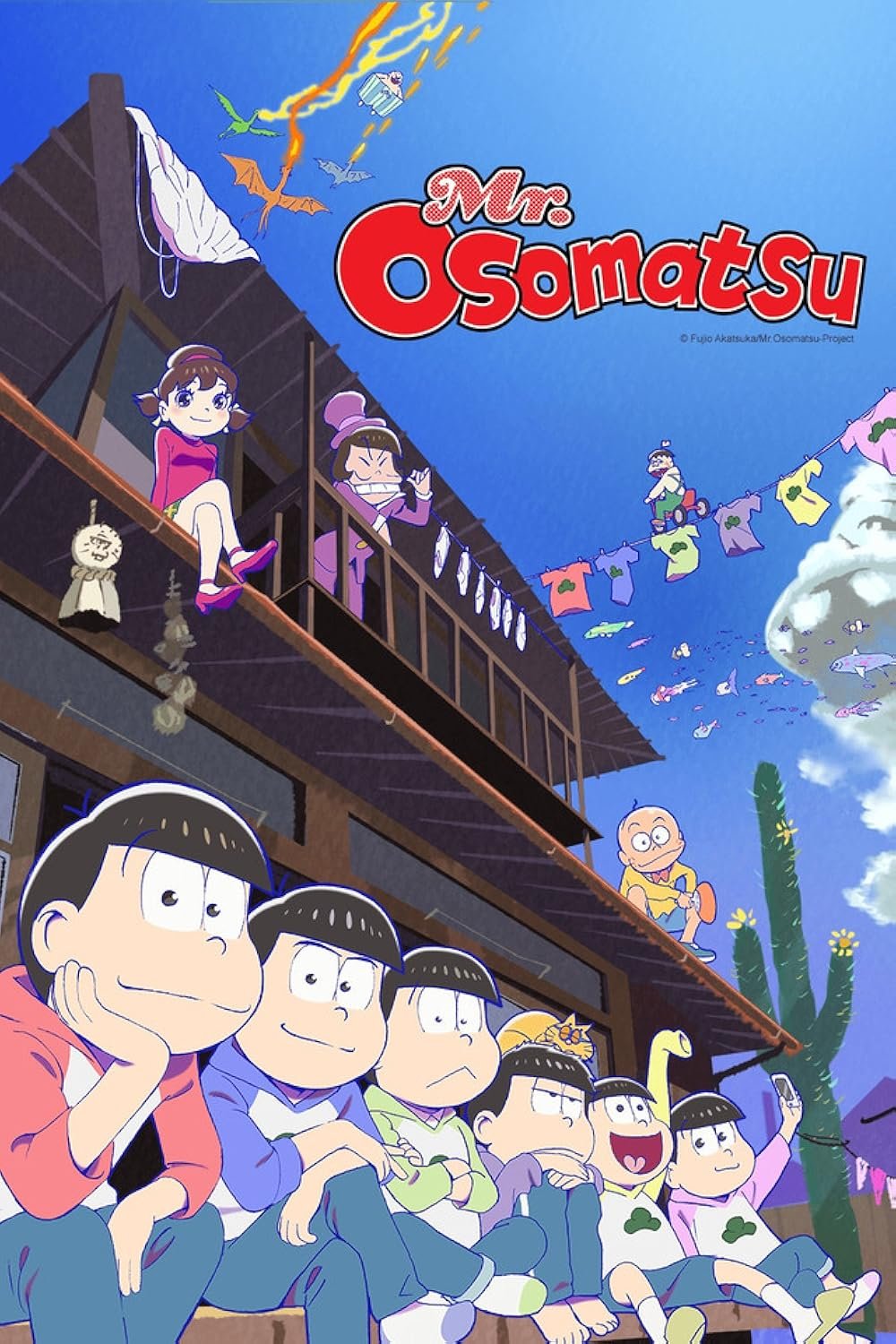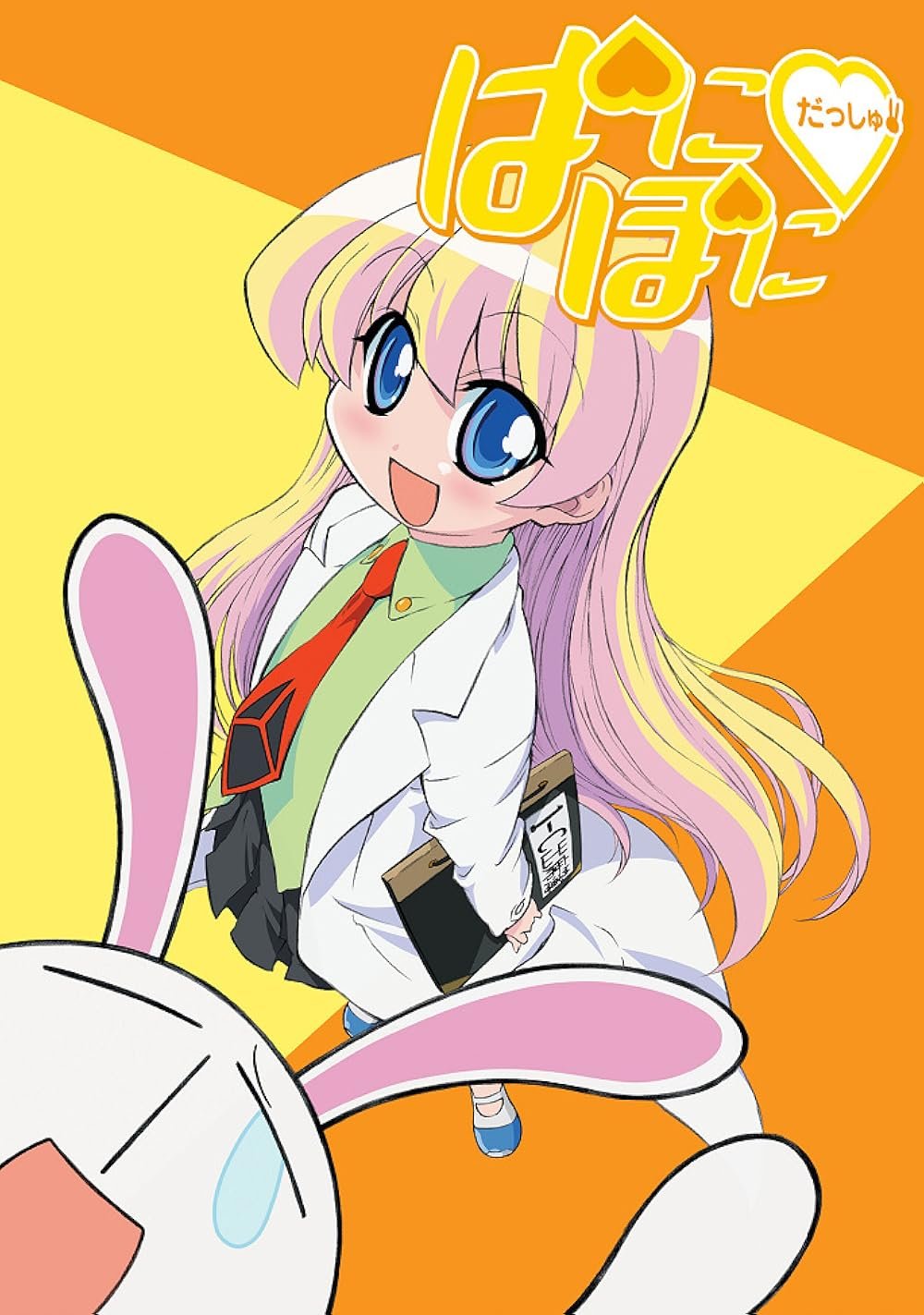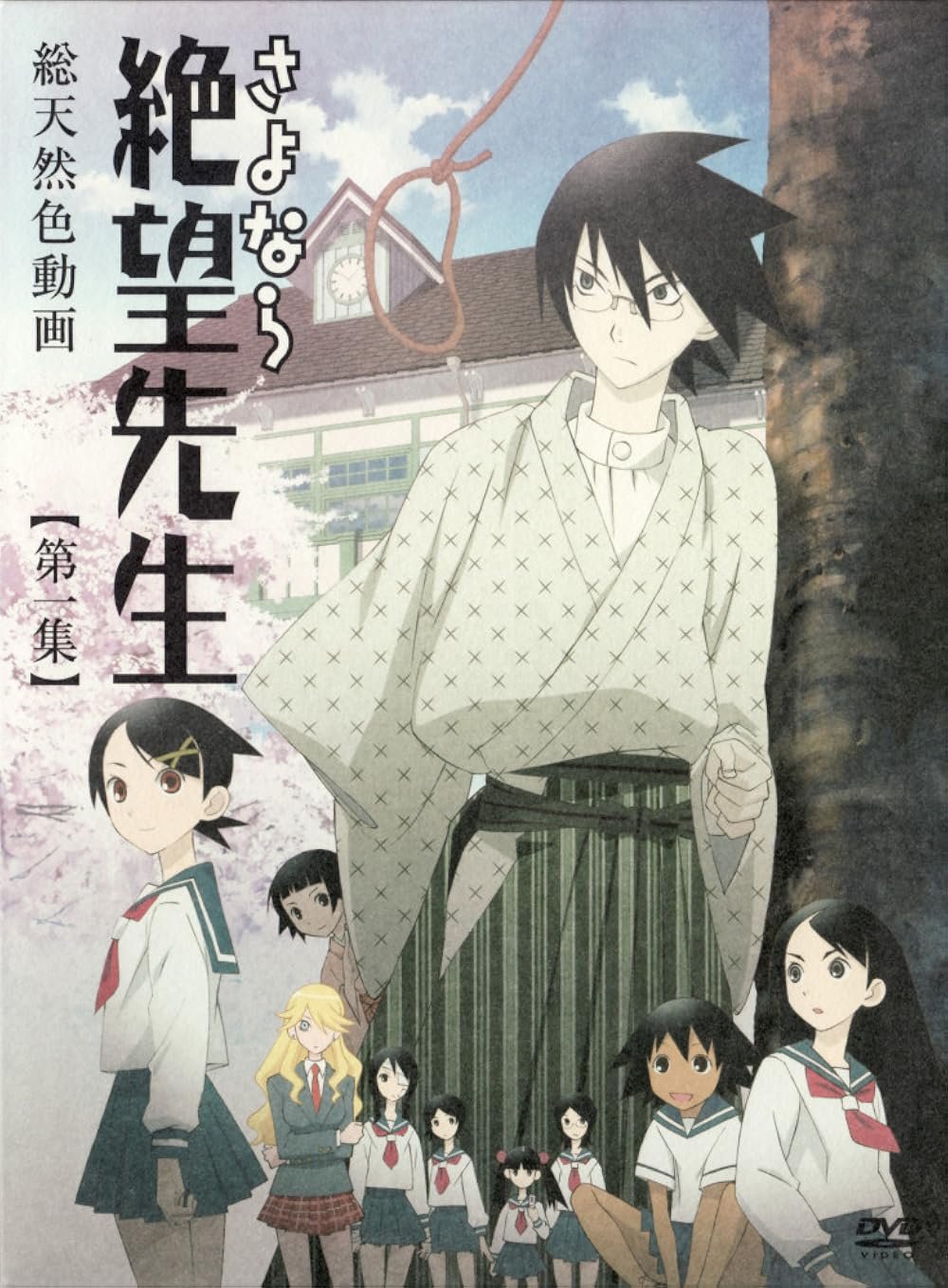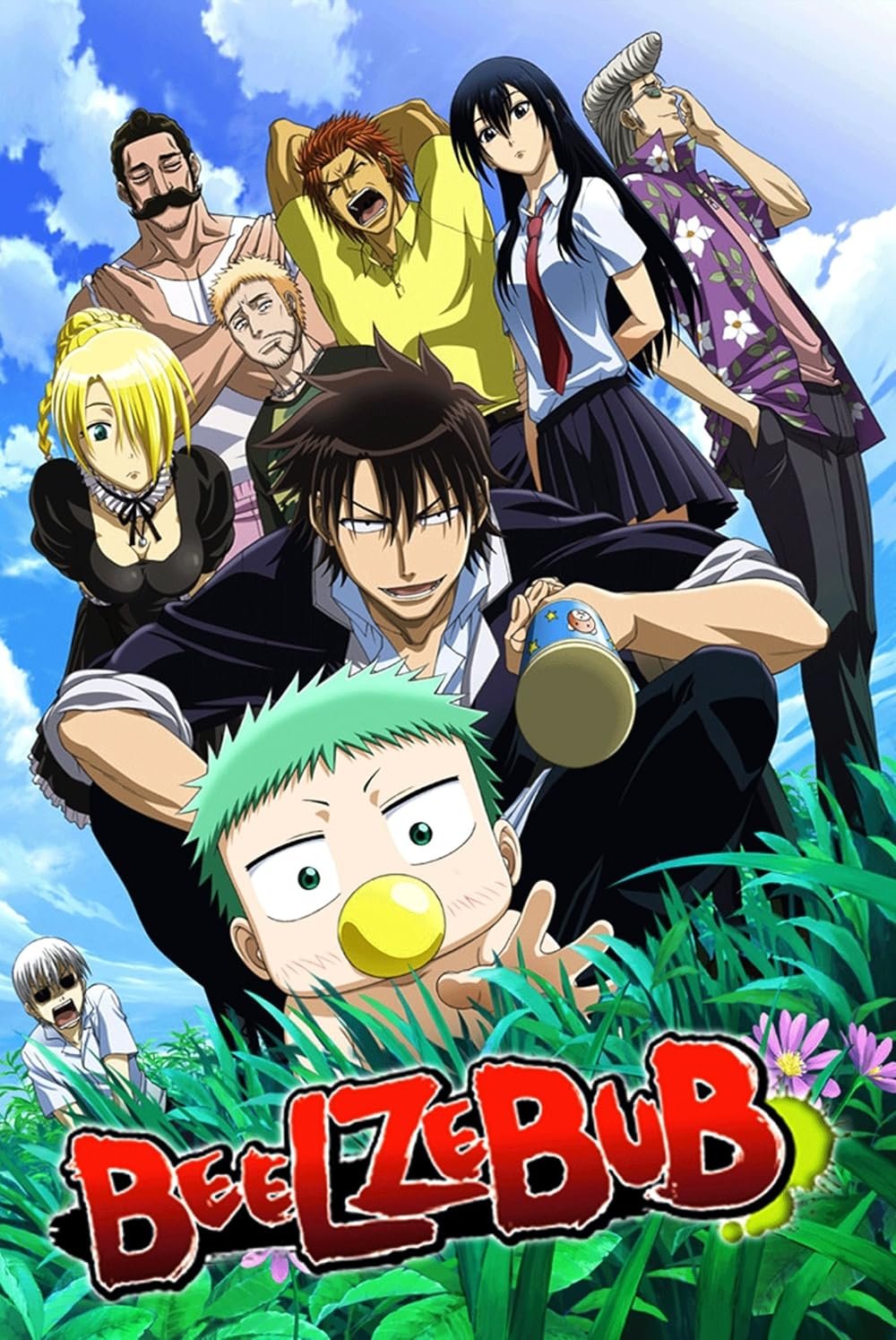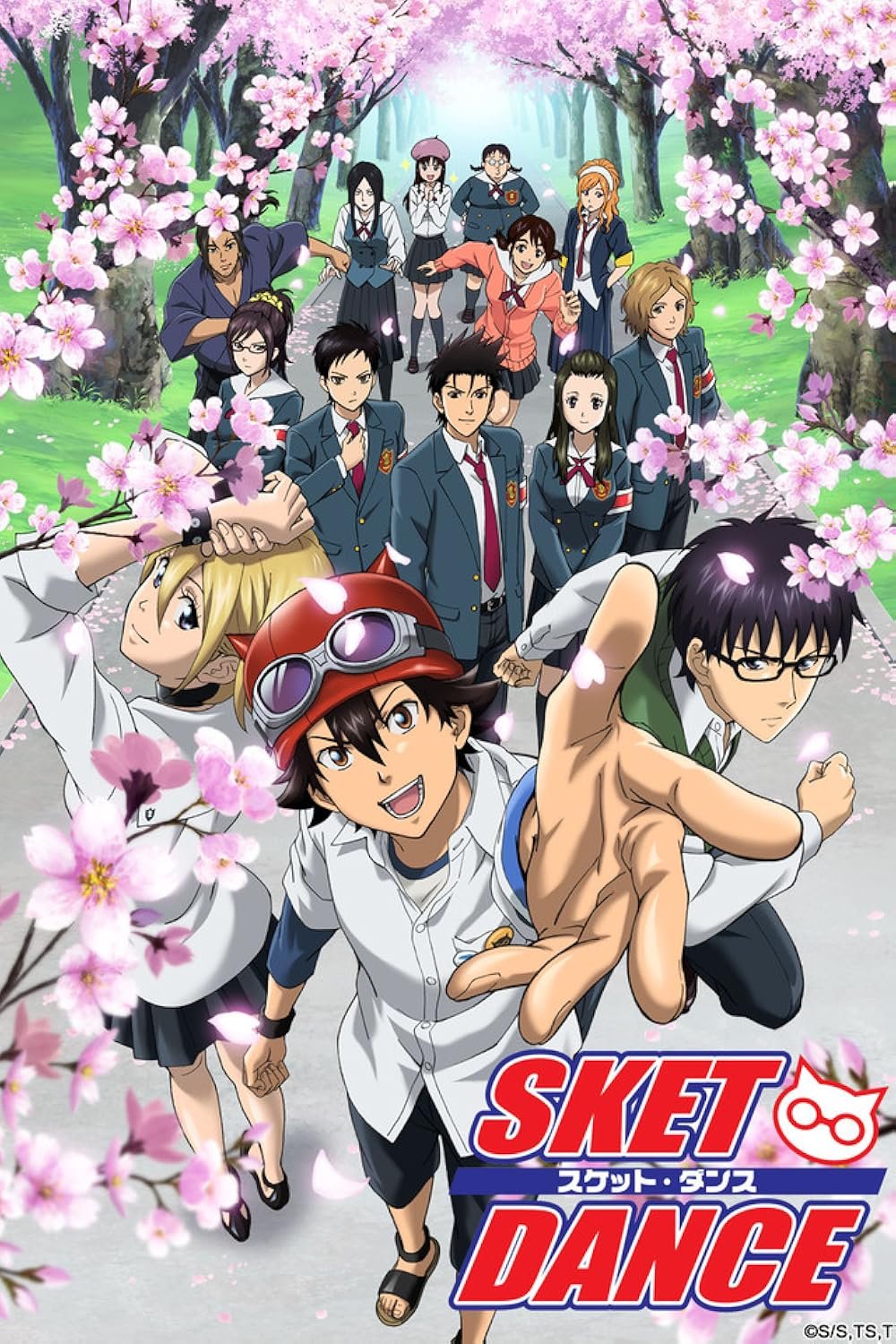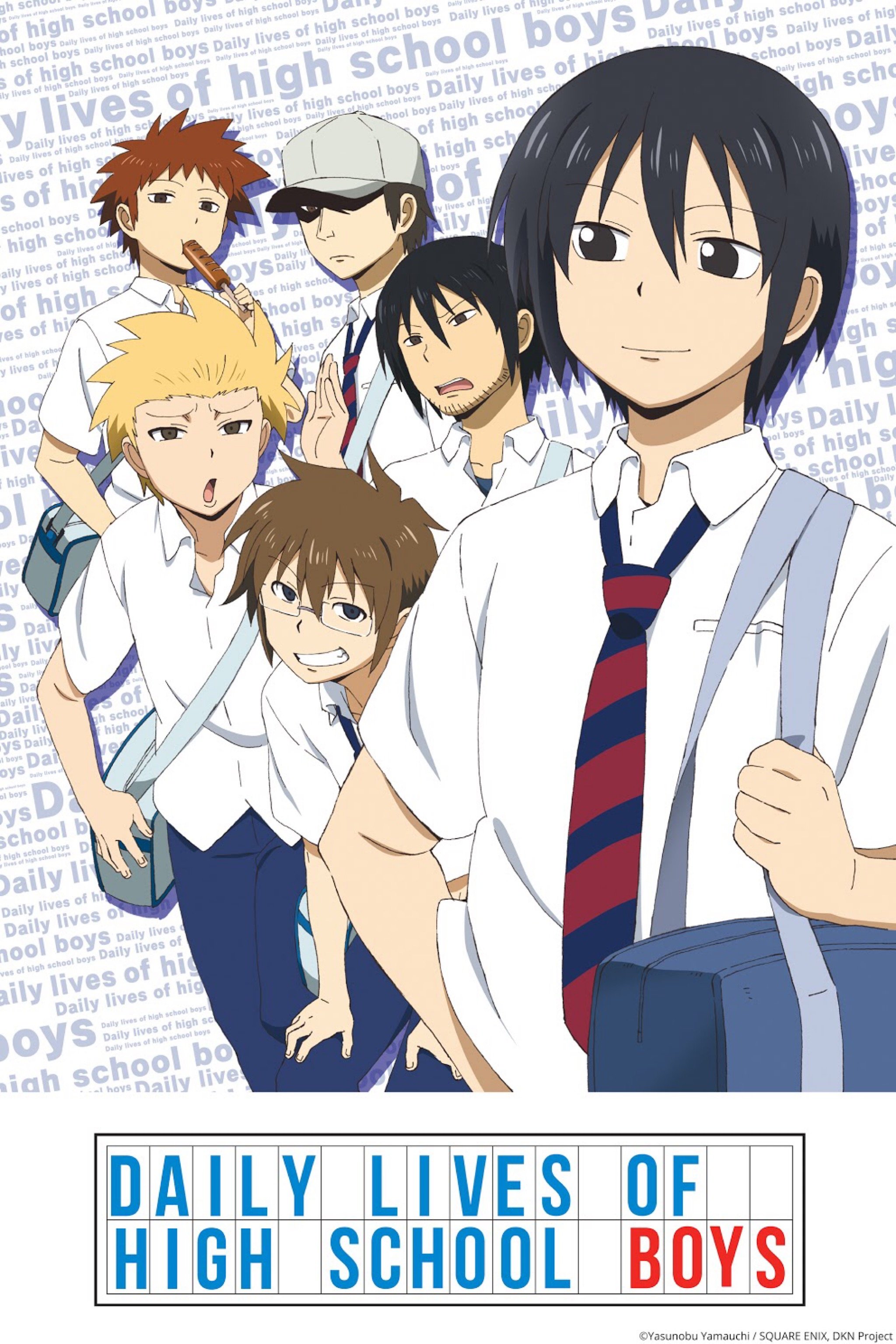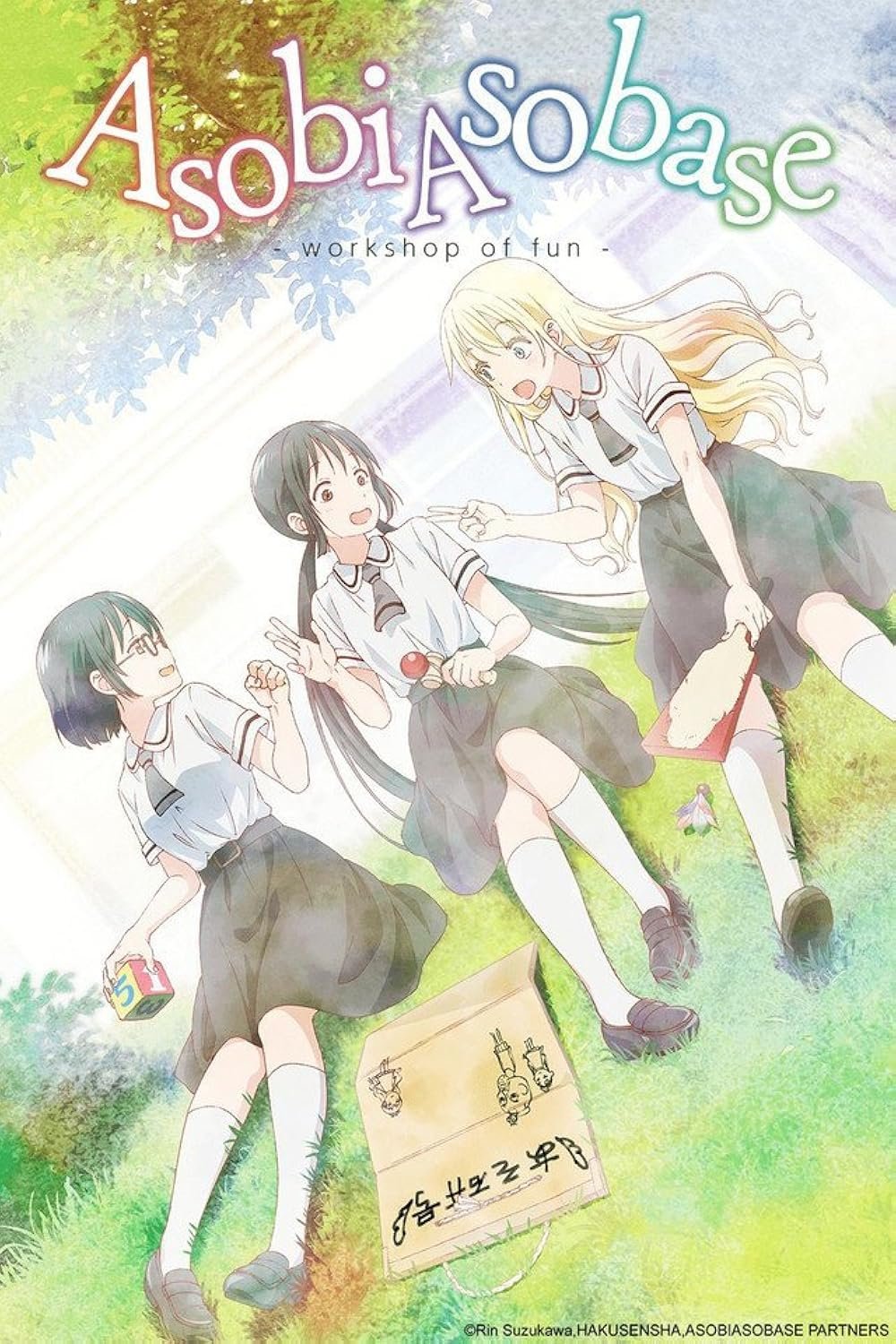The picks below cover sketch comedy, romcom sparring, gag-fueled chaos and parody that skewers pop culture. We start at #25 and count down to the top spot. Comedy tastes vary, but each title here delivers clear, repeatable laughs with strong character-driven bits, sharp timing and memorable set pieces that still land on rewatch.
You will find absurdist gems, school hijinks and shows that mix action with jokes without losing either. When a series pairs a distinct tone with tight comic rhythm, it stands out. That mix is what lifts these entries, from quick-hit sketches to long-running favorites with surprisingly warm cores and surprisingly clever wordplay.
#25. Pop Team Epic
Pop Team Epic thrives on non sequiturs, rapid-fire skits and deliberate whiplash. Each episode remixes itself with different voice actors, so the same scenes feel new and weirder the second time. The show’s strength is timing: setups crash into punchlines, then pivot into surreal cutaways that keep the gag density high.
Its parodies hit games, anime styles and even production credits, turning the medium into the joke. The “Hellshake Yano” segment shows how far it will go for a bit, committing to a lo-fi stage sketch until the payoff lands. That commitment to the bit makes the absurdity stick.
Because the humor is sketch-first, you can drop in at any point and still get a full laugh cycle. It rewards viewers who enjoy meta-humor and visual experimentation and it feels different from every other comedy on this list. The result is chaotic, confident and very rewatchable.
#24. Cromartie High School
Cromartie High School plays it straight while the world gets stranger. The deadpan main cast treats a robot classmate and a silent lookalike of a rock icon as normal. That contrast powers the jokes: the more serious the tone, the bigger the punchline when the bizarre slips in. It is classic underreaction comedy.
The show’s short segments waste no time. Conversations escalate into nonsense philosophy, only to end with a shrug and a bell. The rhythm is tight and the character archetypes bounce off each other without breaking the calm. It is understated and that restraint makes the humor hit harder.
The art is simple and expressive, letting facial stills do work that dialogue cannot. When a character refuses to acknowledge the obvious, the silence becomes the joke. That patience is rare and it keeps the gags crisp rather than loud. Less is more here and it keeps landing.
Fans of straight-faced absurdity will find a consistent flow of laughs. You come for the weird setup and stay because the show never winks. The lack of self-congratulation is the point and it pays off.
#23. Excel Saga
Excel Saga parodies everything, then parodies the parody. Each episode jumps genres, from sci-fi to sports, keeping the energy high and the timing relentless. Excel herself is a motor of chaos, talking faster than anyone can react, while the show breaks its own rules for the next joke.
Director Nabeshin appears in-universe to steer or derail scenes and that meta layer makes the punchlines hit twice. The humor ranges from slapstick to sharp satire and the cutaway gags arrive before you can predict them. It is a love letter to anime and a roast of it.
The cast is large but clear and running jokes evolve as the series pushes boundaries. Visual gags pile up in the background, rewarding attentive viewers. Even when a joke misses, the next one is seconds away and that volume keeps you laughing.
The finale is infamous for “going too far,” a wink at broadcast limits. That willingness to test edges suits a show built on escalation. Excel Saga is messy by design and that mess is the joke.
For fans of high-speed parody, this remains a cornerstone. Its influence shows in later genre-skewering comedies that learned to aim for everything at once.
#22. Detroit Metal City
Detroit Metal City runs on contrast. By day Soichi wants soft pop; by night he screams as the outrageous Johannes Krauser II. The disconnect between his gentle goals and his metal persona creates constant collisions and every gig becomes a new crisis of identity that spirals into comedy.
The lyrics are over the top, the stage antics are louder than life and yet the show keeps scenes grounded with Soichi’s small, sincere hopes. That balance lets it lampoon music subcultures without punching down. The result is brash, crude and surprisingly focused.
Episodes are short and dense, with punchlines that land fast. Costumes, chants and crowd reactions turn into recurring bits that get funnier as you learn the rules. If you like character-driven cringe mixed with loud spectacle, this hits a sweet spot.
#21. Osomatsu-san
Osomatsu-san revives the Matsuno sextuplets and updates their mischief with modern references and sharp meta-jokes. Each brother has a distinct flaw that fuels the punchlines, so even simple premises spiral into big, silly scenes. The tone swings from sketch absurdity to sly industry in-jokes.
The show experiments with art styles and mock trailers, turning format into part of the humor. That variety keeps the pace brisk and the visual gags fresh. It is self-aware without getting smug, which is tough to pull off.
Because it is sketch-based, you can jump around without losing the thread. Running jokes build, but each short lands on its own. Fans of parody and quick shifts in tone will find plenty to latch onto.
Also Read
10 phrases that sound supportive but are actually a subtle sign of manipulation
It also sneaks in heart when you least expect it. A brief moment of sincerity makes the next pratfall even funnier, a neat contrast the series uses well.
#20. Pani Poni Dash!
Pani Poni Dash! throws puns, signs and background gags at you from every corner of the frame. Child prodigy teacher Rebecca anchors a class of oddballs whose banter never stops. The show’s trademark is chalkboard jokes that change shot to shot, packing scenes with hidden punchlines.
Visual style matters here. Camera tricks and sudden cutaways create a rhythm that keeps the energy high without feeling random. It is dense but playful, leaning on wordplay and references without losing character charm.
The ensemble is large, yet each student gets moments that stick. Short skits let the anime sprint from one setup to another, which suits its hyperactive tone. If you enjoy pausing to catch every joke, this is a treat.
Also Read
10 Phrases That Sound Supportive But Are Actually a Subtle Sign of Manipulation
The comedy works even when you miss a reference, since the delivery is the point. A well-timed stare or silence can be the payoff and the show knows when to slow down for that beat.
It is a snapshot of an era of maximalist gag anime, still bright and still funny. The sheer density rewards rewatching and keeps the laughs coming.
#19. Sayonara Zetsubou Sensei
Sayonara Zetsubou Sensei turns pessimism into punchlines. Teacher Nozomu Itoshiki sees despair in everything and his students respond with their own quirks, creating a loop of exaggerated logic that ends in a crisp gag. The visual design uses text overlays and frames as part of the joke.
Wordplay is the star. Puns, signage and blink-and-miss notes fill the screen. That density rewards attention and the dark tone keeps it distinct from lighter school comedies. You laugh, then notice a hidden bit and laugh again.
Also Read
People With Low Emotional Intelligence Often Miss These 6 Social Cues
Even when topics get bleak, delivery stays dry rather than harsh. The contrast between morbid setups and polite classroom banter creates humor that feels oddly soothing. It is cynicism with neat handwriting.
#18. Beelzebub
Beelzebub mixes brawler comedy with a supernatural babysitting gig. Delinquent Oga ends up raising a demon lord’s baby and every fight becomes a parenting problem. That twist fuels running gags, from electric tantrums to tough guys forced into caretaker roles they never asked for.
The cast of rival factions adds flavor. Side characters escalate simple tasks into turf wars that end with a silly payoff. The show balances slapstick with shonen pacing, so the stakes climb without losing the jokes that make it fun.
Action scenes are built for humor, with punches turning into punchlines. It is rowdy, loud and charmingly earnest about weird duties like diaper duty. The series sells the premise and lets it run.
Also Read
8 Weird Habits You Don’t Realize You Have From Growing Up In A “We Can’t Afford It” Household
Under the noise is a soft spot for found family. That little bit of heart makes the chaos more engaging and the laughs stickier.
#17. Sket Dance
Sket Dance centers on a club that helps with any request, which is perfect for comedy. Each case becomes a new sketch with its own rules and the core trio’s chemistry gives even small problems a big, funny payoff. The tone is bright but flexible.
What sets it apart is how often sincerity and humor share space. A goofy setup can end in a kind moment without killing the joke. That balance turns one-off gags into stories you remember.
Parody episodes and crossover nods keep the variety high. The series also loves word games and role reversals, letting the actors stretch. It is a clean showcase of school-club comedy done right.
Also Read
10 Phrases That Sound Supportive But Are Actually A Subtle Sign Of Manipulation
When the show slows down, it earns the beat. Then it snaps back to jokes with renewed energy, a rhythm that keeps the pace lively across many episodes.
Fans who want smiles with some heart will find this an easy, steady watch. The laughs come from character choices, which is why they last.
#16. Daily Lives of High School Boys
Daily Lives of High School Boys nails awkward timing and overthinking. Skits run on tiny misunderstandings that balloon into ridiculous speeches, then collapse with a simple line. The main trio’s delivery sells it, turning silence into a punchline as often as shouting does.
Standout bits like the riverside “literature girl” show how the series uses earnestness as a setup. When someone commits too hard to a bit, the show lets them fall just far enough to be funny and relatable. It is cringe in a friendly way.
Also Read
8 Cringey Phrases Older Relatives Use at Family Dinners That Younger Guests Dread
The secondary cast keeps the energy fresh, especially the equally chaotic girls’ school. Background details and deadpan reactions do a lot of work. Every episode has at least one sketch that sticks with you.
#15. Asobi Asobase
Asobi Asobase specializes in facial expressions that go from cute to unhinged in a blink. Three classmates play simple games that spiral into power struggles and the art style flips to match the meltdown. The contrast between a sweet opening and savage punchlines is part of the fun.
The humor lives in escalation. A small rule becomes a legal code, then a feud, then a final twist that undercuts the winner. The sound design adds bite, turning whispers and shrieks into comedy beats.
Because each sketch resets, the show never drags. Running jokes build, but the series avoids bloat by keeping premises tight. It is sharp, loud when needed and perfectly petty in the best way.
When it leans into absurd lore for background characters, it never loses the main trio’s chemistry. Their bad decisions are the fuel and the faces are the fire.
